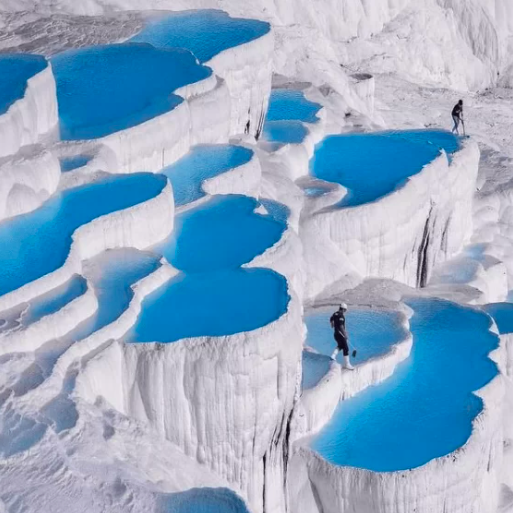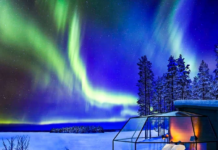Pamukkale, that in Turkish means “cotton fortress”, is one of the most beautiful natural sites on the planet. All along the side of the mountain, nature sculpted evocative terraces of limestone and travertine. So white and powdery, terraces seem to be cover with sugar, snow or cotton, from which the name. Also for this, Pamukkale is for sure one of the most visited destinations in Turkey and an almost unique natural show in the world. Let’s discover more about this wonder.
Most beautiful NATURAL SPA in the world is a “cotton castle”
# The cotton fortress and the thermal water pools
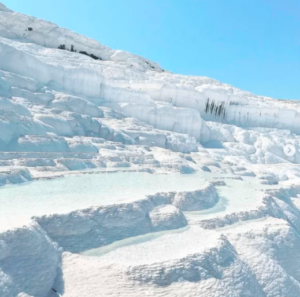
Pamukkale is located in the province of Denizli, in the south-western part of Turkey. If continuous tectonic movements – over the centuries – have caused frequent earthquakes, they have also given birth to a number of thermal sources. Emerged fluids has created peculiar limestone formations, terraces filled with thermal waters, in a multitude of natural pools.
As the climate in the area is typically warm and continental, and thanks to hot waters, here is possible to bathe even in winter. The temperature, actually, always remains around 36 degrees. A number of small calcareous waterfall emphasizes the sensation of lying in a castle covered with cotton.
# The tragic human intervention and the UNESCO recovery plan
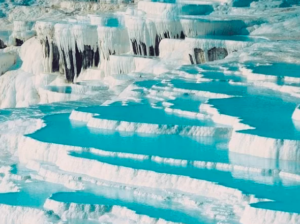
Unfortunately, Pamukkale was damaged and spoiled during the last century. Local people built hotels just above the site and canalized the hot waters, in order to fulfill the artificial hotel pools. Also, they poured waste waters directly into the site, darkening the white calcareous scenario. And, not only: they also built traced an asphalt road in the middle of the pools; and allowed visitors to wash in the thermal waters using industrial detergents, further exacerbating the pollution.
Only following all these enormous damages, UNESCO decided to intervene, and a recovery plan was drawn up to stop the darkening process of the terraces. According to this, hotels were demolished, and pools whitened with the light of the sun.
Today, the site is constantly under control in order to prevent visitors from further abusing this place. Thanks to these interventions, the rare pearl of Pamukkale is slowly returning to its original appearance.
# Hierapoli, the city on the peak of the cotton castle
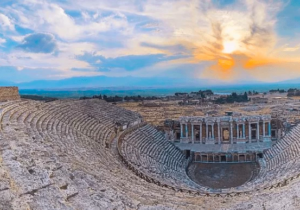
On the peak of the cotton castle, there is in the old center of Hierapolis. It was founded in the II century b.C. by king Pergamo. After that in the year 60 b.C. was teared down by a tragic earthquake, it was completely rebuilt with the features of a typical Roman city. Yet, reached its maximum splendor under the Byzantine dominance.
It seems that in year 80 a.C. one of the twelve apostle – Philip – arrived here, where he also died. On his grave was built the first church, soon became an important center for Christianity. Finally, Hierapolis passed under the Turkish dominance that protected its heritage.
Today Hierapolis and the thermal site are officially UNESCO World Heritages.
CHIARA BARONE


